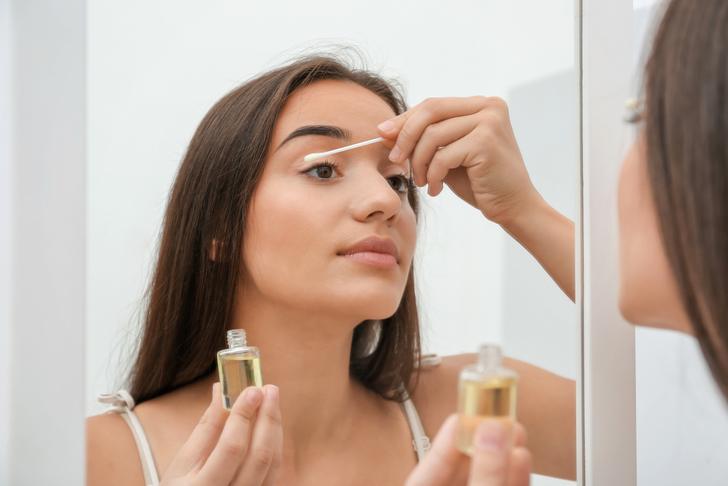What is Microneedling is and How Does it Work?
Throughout the ages, women have sought ways to keep their skin looking youthful, vibrant, and radiant. In the olden days, there were strange concoctions and weird contraptions that were intended to present the supple beauty ladies had in their younger years. Of course, many of those attempts at regenerating skin cells were unproven generations ago. But today, we have new tools that are helping enhance the way women feel when they see themselves in the mirror. Microneedling, for example, hit the skincare scene in the United States in the 1950s, which means it’s far more than a mere trend. Over the past decades, microneedling has found its way into the world as women’s must-have skin rejuvenation technique. So, what exactly is microneedling and how does it work? Let’s take a look!

Microneedling: The Basics
Simply put, the process of microneedling inserts a series of very fine, short needles into the surface of a person’s skin. The needles are attached to a handheld roller, known as a derma roller. The design of the derma roller makes it easy for users to simply guide it along their face as the roller enables the needles to constantly contact the skin.
When the microneedles glide over a person’s face, they cause tiny micro-injuries to the skin. The body, in turn, responds by sending healing elements to the treated area, signaling the skin to produce more collagen, elastin, and glycosaminoglycans—each of which is responsible for supporting firm, taut, flexible skin. The process also creates vertical exfoliation channels to the skin, enabling improved access to the oxygen and nutrients the skin needs to look its best.
Why Do Collagen & Elastin Matter?
Collagen and elastin are the building blocks for the skin, creating the connectivity from cell to cell that enables it to stay plump and fresh. When we’re in our younger years, our bodies produce plenty of collagen; that’s why babies have those rosy, firm cheeks and super-soft skin. Over time, a combination of age, diet, and habits cause our bodies to decrease the production of natural collagen. This is when we start seeing wrinkles, fine lines, and sagging skin.
Once natural collagen production begins to fade, the body needs a reason to resurrect its rejuvenation techniques. This is where microneedling enters the picture. Because microneedling imparts micro-injuries to the skin, the dormant production of collagen is brought back to life, as the body’s restorative, healing tendencies go into play. The connective proteins take action on the treated areas, bringing with it new skin cells and renewed connective protein that has greater flexibility and firmness than its predecessors. The result is an immediate reduction in wrinkles, mild scarring, and the signs of aging.
Can You Microneedle at Home?
Microneedling began as a procedure that needed to be performed by trained professionals, but over time, technology has lent itself to a number of household products that can enhance to the look and feel of women’s skin from their own homes. Before you invest in an at-home microneedling device, make sure you read online reviews, investigate companies, and come to your own conclusions. Like anything else, there are companies that make false promises, but if you do your research, you’ll surely find a fit for your at-home facial needs.
Who Is a Candidate for Microneedling?
Almost everyone is a great candidate for microneedling because it’s a non-invasive procedure that can even be done at home. It’s designed to help even out the appearance of skin spots, smooth fine lines, and enhance the overall texture and look of a person’s facial skin. Since microneedling can be performed in the privacy of your own home, you’re likely a great candidate unless:
- You’re currently nursing or pregnant: Although the risk of complications is extremely low, it’s always best to consult your doctor before changing any routine when you’re pregnant or nursing.
- You’re known to develop skin sores or rashes: If you’re prone to breakouts of any sort, it’s best to consult with your primary care physician or dermatologist before imbibing in the benefits of microneedling.
- Your skin is currently breaking out: You don’t want to cause damage to skin that’s currently in a fragile state. If you’re experiencing severe breakouts, it’s best to consult a professional before you try any product or procedure.
- Allergic reactions are common for you: Microneedling devices are created from medical-grade materials, but if your skin is ultra-sensitive and known to refute your attempts at beautifying your skin, consult your doctor before trying any microneedling procedures or devices.
How to Microneedle at Home
Microneedling can absolutely be performed at home. In fact, it’s far more cost effective to care for your skin at home, as long as you have the right tools and follow best practices in terms of skincare cleanliness.
1. Start with the Right Tools: Your facial skin is fragile, and you shouldn’t expose it to just any old device on the market. Before you begin, make sure you’ve found a microneedling regeneration tool that has outstanding reviews, is made from high-quality material, and is from a brand that’s recognized in the industry.
2. Wash Your Hands: Never—we repeat, never—do anything that deals with your face without washing your hands first. The bacteria you encounter on a daily basis can scare your facial skin into hiding. This is especially important when you’re microneedling because you’re opening your pores and glands to a whole new world, and if there’s bacteria on your hands, you’re inviting unnecessary (and unwanted) infection. Go with an anti-bacterial soap that’s scent-free so you don’t irritate the freshly prodded skin you’ll soon be working with.
3. Cleanse Your Derma Roller: In terms of best practices when it comes to at-home microneedling, you can never be too clean. Sanitize your tool before and after each application to ensure it’s at its best the next time you want to use it.
4. Clean Your Face: It’s important to thoroughly clean your face before you begin microneedling because the derma roller will otherwise put pockets of dirt and oil directly into your skin, which could cause an undesirable outbreak. The proper pre-treatment solutions will both sanitize your skin and prepare it to produce the peptides that support collagen production.
5. Glide Your Derma Roller Across Your Skin: Once your skin is prepped and primped, glide your microneedling device across your skin gently, making sure to cover the entire area of your face without pressing too hard or going over the same spot too many times. This is your at-home spa time, so take a breath, relax, and enjoy the moments you’ve allocated to yourself. As a note, it’s best to microneedle at night or on your days off so your skin has time to recover before you put on makeup and face the world again. However, it can be done on the go as well, whenever is most convenient for you.
6. Wash Your Face with Gentle Cleanser: Microneedling can cause your skin’s bacteria to come to the surface. In some situations, you may experience small bits of blood, which are completely harmless, but you don’t want to face your day with either of these situations hanging out on your face. It’s important to cleanse your skin with something gentle and specifically made for the fragile skin of a person’s face. This will ensure bad bacteria is washed away, and your newly generated cells have a clean ground on which to grow.
7. Use a Moisturizer: No matter if it’s day or night, make sure you moisturize your freshly cleaned face with a product that’s reinforced with collagen-producing elements. Off-the-shelf products from your local pharmacy won’t do the trick. You need moisturizers that are developed for aging skin and formulated with the types of ingredients that keep it looking its best.
8. Always Apply Sunscreen: Today’s sunscreen isn’t the product our moms grew up with. You can find incredible sunscreen features that are built into base foundations and tints, which also include the special ingredients your skin needs to grow and be its best. No matter what you’ll be doing, you’ll probably be exposing your skin to some amount of sunlight. Runs to the grocery store, sit-ins at soccer games, and pick-ups from school all require your face to face the elements. Protect your freshly prepped skin with sunscreen that’ll help your microneedling process have the greatest effect.
9. Clean Your Device: Don’t let your skin’s bacteria find its way back onto your face. After you’ve finished microneedling, be sure to clean your derma roller thoroughly. Sterilize it with rubbing alcohol or a specialized cleanser, and let it air dry for at least five minutes before putting it away. This will ensure it’s ready to meet your skin again when you’re due for your next in-home facial. Don’t let your roller get old. It’s important to replace it every four weeks if you’re using it regularly. If your using it only intermittently, it can last longer, but it’s still important to replace the roller at least quarterly.
Conclusion
For women who are looking for more than a bandwagon approach to enhancing their aesthetics, microneedling is an excellent option. With today’s technologies, you no longer need to spend crazy amount of cash at a spa. You can have everything you need to complete an at-home microneedling treatment at your fingertips. Give your skin the gift of a more youthful appearance today!






